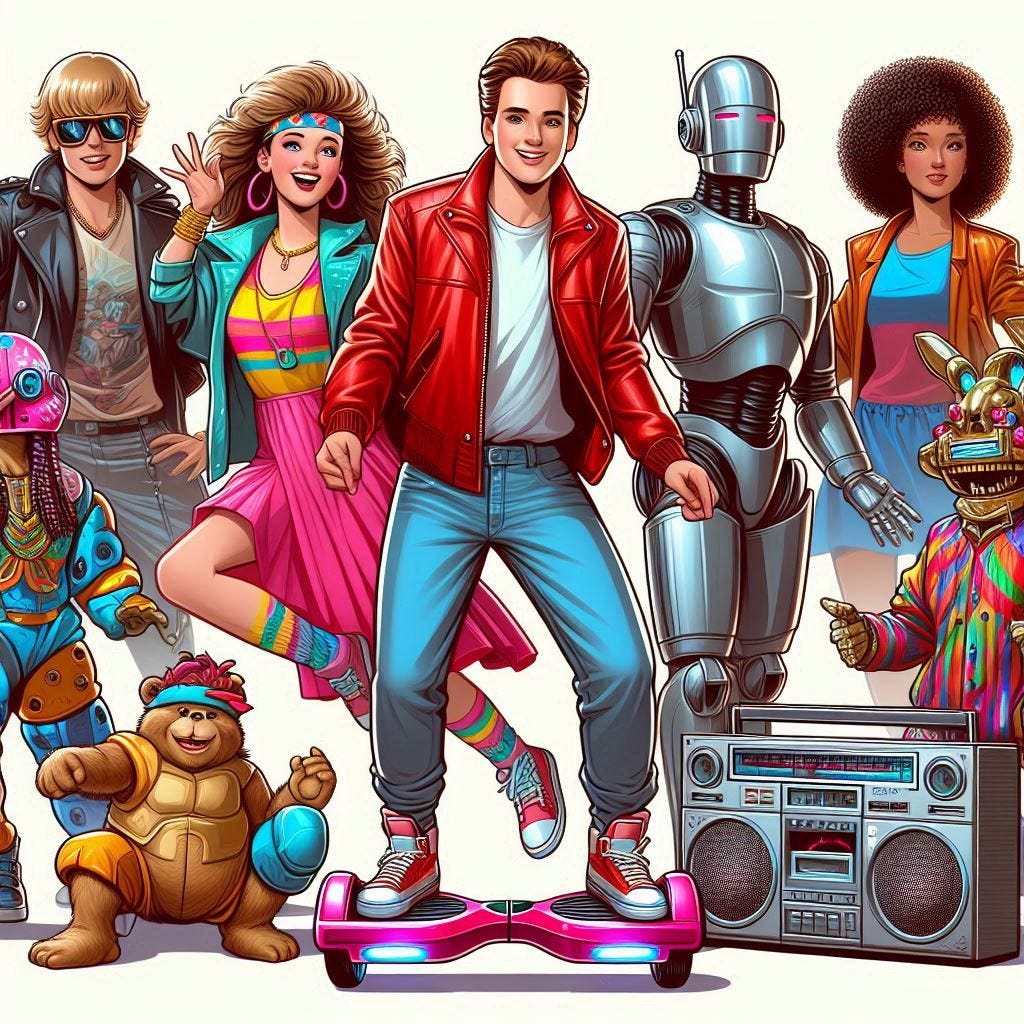Capturing The Cultural Zeitgeist
Pop culture references have become a powerful tool in marketing and advertising.
Driving in my boring Toyota Camry, listening to “Nowhere to Run” off the new Kings of Leon “Can We Please Have Fun” album, I imagined myself driving in a Corvette, as Sugar, Colin Farrell’s character in Apple+’s new series. Which got me thinking about how pop culture references add colour to our lives.
Pop culture references have their origins in the rise of mass media and popular culture in the 20th century and the way we identified with the characters we saw on screen or listened to on the radio. But it’s not just the way we imagine ourselves it’s the way we advertise, and marketing plagiarists have introduced these images into our marketing and advertising strategies, providing a powerful way for brands to connect with their target audiences and create a sense of familiarity and relatability.
By tapping into shared cultural experiences and resonating with people's interests and preferences, pop culture references have provided a shortcut for brands to establish a strong emotional connection with their consumers.
In today's media-saturated environment, where consumers are constantly bombarded with advertising messages, pop culture references can act as hooks that pique people's curiosity and make them more likely to engage with the brand's message. By referencing popular movies, TV shows, music, or memes, brands can tap into the cultural zeitgeist and create an instant connection with consumers who are familiar with those references.
Moreover, pop culture references can help brands position themselves as culturally relevant and in tune with the interests and preferences of their target market. By demonstrating an understanding of popular culture, brands can appear more relatable and approachable, which can foster a sense of trust and loyalty among consumers. This is particularly important for brands targeting younger demographics, who often place a high value on cultural relevance and authenticity.
Pop culture references can also be used as a creative and humorous way to convey a brand's message or to promote a product or service. By leveraging popular cultural references in a clever or unexpected way, brands can create memorable and shareable advertising content that resonates with consumers and stands out from the competition. This approach can be particularly effective in social media marketing, where viral and meme-worthy content often gains significant traction and engagement.
Pop culture references have become a powerful tool in marketing and advertising, allowing brands to connect with their target audiences, establish cultural relevance, and create memorable and engaging campaigns.
ASB's “Ben and Amy's Little Window Shopper” ad has created a heartwarming advertising campaign featuring children, Ben and Amy, who use their imagination to go on a shopping adventure. The campaign incorporates pop culture references, such as the children pretending to be superheroes and referencing popular movies, to create an engaging and relatable story.
Trustpower's “Meant To Be Together / Four Leg Good” is an advertising campaign that features a series of humorous and heartwarming ads that include a parody of the popular TV show “The Bachelor,” to connect with the audience and create memorable content.
PAK'nSAVE's “Stickman” has a long-running campaign that often incorporates pop culture references, such as movie parodies, while the McDonald's “New Mac Family” featured a parody of the popular TV show “Modern Family.” The campaign incorporated pop culture references and humour to promote their new menu items and connect with the audience.
Some advertising campaigns in New Zealand have tapped into older popular trends to connect with their target audience through nostalgia. By revisiting older advertising hits or incorporating references to golden sitcoms or once popular icons, brands can score extra points with those who have fond memories of those times. Incorporating pop culture references into social media strategies can help brands stand out in a crowded digital landscape and increase engagement and better chances of content gaining traffic.
When used effectively and with cultural sensitivity, pop culture references can help brands forge stronger emotional connections with consumers and stand out in a crowded and competitive marketplace.
However, it is important for marketers and advertisers to exercise caution when using pop culture references, as they can quickly become outdated or lose their relevance. Brands must carefully consider the cultural context and ensure that the references they use are appropriate and relatable to their target audience. Additionally, they should be mindful of potential cultural appropriation or insensitivity, as some pop culture references may be perceived as offensive or disrespectful by certain groups or communities.
READ MORE
Clues to Cultural Marketing
https://grahammedcalf.substack.com/p/clues-to-cultural-marketing
The Big Idea
https://grahammedcalf.substack.com/p/the-big-idea
What Marketing Can Learn From Music
https://grahammedcalf.substack.com/p/what-marketing-can-learn-from-music
The Culture Wars Conundrum
https://grahammedcalf.substack.com/p/the-culture-wars-conundrum




